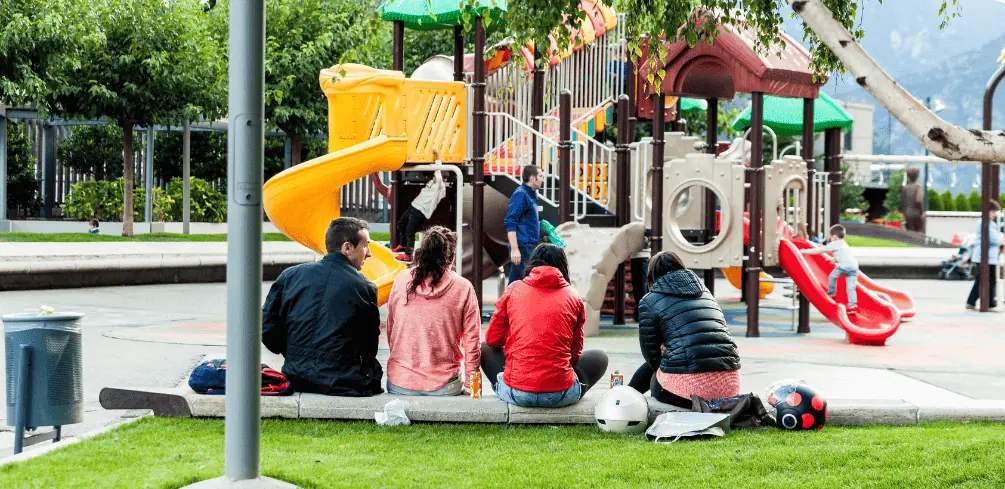Imagine yourself bouncing into the air, defying gravity for a moment as your feet leave the ground, only to be gently caught and propelled skyward again by a resilient surface beneath you. You’re experiencing the thrill of trampolining, an activity that has captivated people for centuries and evolved into both an Olympic sport and a popular recreational pastime.
In this article, we’ll delve deep into the evolution of trampolines – from their humble beginnings as walrus skin contraptions used by Arctic peoples to test their agility and strength, through their transformation at the hands of circus performers like Du Trampolin, up until today’s cutting-edge designs pioneered by innovators such as Larry Griswold and George Nissen.
We’ll see how these devices became indispensable tools for training pilots during World War II and preparing astronauts for space travel in NASA programs.
Alongside these developments in professional fields, we will explore significant milestones in trampoline sporting history – including Nissen’s unforgettable kangaroo stunt in Central Park that captured global attention, the recognition of trampolining as an Olympic discipline in 2000, and even discuss some world records set within this exciting realm.
Inuit Origins and Evolution Of The Trampoline

You might not know it, but the humble beginnings of trampolines can actually be traced back to the Inuit people. They ingeniously crafted them from walrus skin and used fellow tribe members as springs to propel each other into the air.
This ancient pastime was deeply rooted in Inuit traditions and served both practical and ceremonial purposes.
For example, it was a way for hunters to practice their agility and balance while also being an entertaining spectacle during celebrations. The use of native materials, such as walrus skin, made these early trampolines both durable and flexible enough to withstand repeated bouncing.
Over time, however, modern adaptations have replaced these traditional materials with more advanced technology, like steel springs and nylon fabric. Despite these changes, the core concept of using a resilient surface to generate bounce remains consistent with its original Inuit design.
Today’s trampolines are not only enjoyed recreationally but have also found their way into professional sports like gymnastics and even space exploration training programs. As you explore the fascinating history of trampolines, you’ll discover that this seemingly simple invention has had significant cultural significance across generations and continents.
The health benefits associated with regular trampoline use include improved cardiovascular fitness, increased muscle strength, better balance, and coordination skills development – all contributing factors to why this ancient invention continues to endure in modern times.
So next time you find yourself soaring high on a trampoline, take a moment to appreciate its rich historical roots and the innovative spirit of the Inuit people who first brought it to life.
Circus and Gymnastics Influence

It’s no surprise that circuses and gymnastics had a major impact on trampoline development, as aerial acrobats were probably like, ‘duh, we need this rad bouncing contraption to practice our flips and tricks!’
Circus acrobatics and gymnastics training went hand in hand with the evolution of the trampoline. You can trace back the initial inspiration for modern trampolines to du Trampoline, a circus performer who saw potential in adapting Inuit walrus skin contraptions into a performance art tool.
As the trampoline gained popularity within the entertainment industry, it quickly became a staple act in many circuses worldwide. In 1934, Larry Griswold and George Nissen took du Trampolin’s idea one step further by expanding upon its design.
They used materials like canvas beds and rubber springs to create a more effective rebounding apparatus suitable for both circus performances and gymnastics training. The duo recognized that beyond mere entertainment purposes, trampolines could serve as an excellent physical therapy tool for athletes recovering from injuries or building stamina.
Their innovative design soon caught on among universities and gymnasiums throughout America. As time went on, people began to realize even more potential uses for trampolines – not only within the realms of performance art but also in practical applications such as astronaut and pilot training.
However, it wasn’t until the year 2000 that Olympic officials finally acknowledged trampolining as an official discipline worthy of competition.
Today, you’ll find people across all walks of life enjoying these bouncy inventions – from professional athletes honing their skills to everyday folks seeking fun at massive indoor parks like Flip Out in Glasgow or participating in extreme sports variations involving bungee cords!
Olympic Recognition Of Trampoline

So, what’s the deal with trampolining finally getting its well-deserved spot in the Olympics?
Well, it all began with a series of international competitions that showcased the sport’s incredible athletic abilities and unique training techniques. These events not only boosted trampolining’s popularity but also helped to establish standardized safety regulations and judging criteria.
- Olympic impact: Trampolining was officially recognized as an Olympic discipline in 2000 during the Sydney Games. This significant milestone paved the way for more athletes to pursue careers in competitive trampoline jumping and brought even greater recognition to this exhilarating sport.
- International competitions: Before its inclusion in the Olympics, trampolining had already gained some international exposure through events like the World Championships, which began in 1964. These competitions allowed athletes from around the world to demonstrate their skills and generate interest in this emerging discipline.
- Safety regulations and future advancements: With increased visibility came greater scrutiny of safety measures and training techniques used by athletes and coaches alike. The International Gymnastics Federation (FIG) took charge of overseeing rules, scoring systems, equipment standards, and coaching requirements for trampoline gymnastics worldwide.
As you can see, trampolining has come a long way since its humble beginnings, with Inuits bouncing on walrus skin or circus performers dazzling audiences on early versions of modern-day apparatuses. Today’s cutting-edge technology continues to push boundaries within the sport – whether it’s through new materials that enhance performance or innovative moves that challenge gravity itself.
As we look ahead into an exciting future filled with awe-inspiring feats of athleticism on display at international competitions like the Olympics, one thing remains certain: there’s no limit to what these talented athletes can accomplish when they take flight on a trampoline!
World Records and Milestones Of Trampolines

In the world of trampolining, there’s always a new record to break or a milestone to achieve, inspiring you to push your limits and reach for the sky.
As trampolines have entered the arena of extreme sports, athletes are constantly pushing boundaries and setting new world records. Trampoline parks have become popular destinations for thrill-seekers looking to challenge themselves with unique combinations like bungee jumping and trampoline jumping.
As you delve into the history of trampolining milestones, you’ll find fascinating stories of World champions like Judy Wills Cline and Dan Millman. They were crowned in 1964 as the first female and male World Champions, respectively. These pioneers paved the way for future generations of athletes, ultimately leading to Olympic recognition in 2000.
The Guinness World Records also document incredible achievements in trampolining. These include the highest bounce (22 ft), most backflips in 30 seconds is (37), and most consecutive flips (3,333).
While these records are impressive on their own, it’s essential not to forget about smaller milestones that showcase determination and teamwork.
For example, a six-man team from Tau Kappa Epsilon fraternity at Cleveland State University set a Guinness World Record for the Longest time jumping on a trampoline. They even earned a congratulatory phone call from Ronald Reagan himself!
So whether you’re aiming for a personal best or chasing an official world record, remember that every leap brings you closer to achieving greatness in the exhilarating world of trampolining.
Frequently Asked Questions
What are the safety measures for using trampolines to prevent injuries?
Don’t let fun bounce away! To prevent injuries, follow these guidelines: heed injury statistics, ensure parental supervision, respect weight limits, wear proper footwear, and consider weather conditions. Stay safe and enjoy!
How has trampoline technology evolved over the years?
Over the years, trampoline technology has evolved, enhancing performance and safety. Trampoline materials improved for durability, bounce physics were studied, advanced springs were developed, modular designs were introduced, and innovative accessories were added to elevate your jumping experience.
Can trampolines be used for therapeutic purposes, such as physical rehabilitation?
Absolutely! Therapeutic bouncing offers rehabilitation techniques and stress relief benefits. Trampoline-assisted yoga can enhance mental health improvements as well. Give it a try for a fun, effective therapy session.
What are some creative ways trampolines have been incorporated into entertainment?
Imagine soaring through the air in a trampoline cinema, where aerial yoga meets trampoline dodgeball. Circus acts and indoor skydiving incorporate trampolines for thrilling performances, creating unforgettable entertainment experiences.
Trampoline parks are another fun way to bounce the day away.
Are there any notable trampoline athletes who have made significant contributions to the sport of trampolining?
You might be amazed by Olympic champions like Irina Karavaeva and Rosie MacLennan, who’ve achieved world records in trampolining. Cirque du Soleil performers also undergo professional training at trampoline parks to master their craft.
Conclusion
So, my friend, you’ve now leaped through the captivating history of trampolines. From their Inuit origins to their Olympic grandeur, it’s evident that trampolines have truly left an indelible mark on our world.
As you bounce forward in life, remember the journey of the trampoline – ever-evolving and adapting to new heights. May this tale of soaring spirits and gravity-defying achievements inspire you to reach for your own dreams and aspirations.





